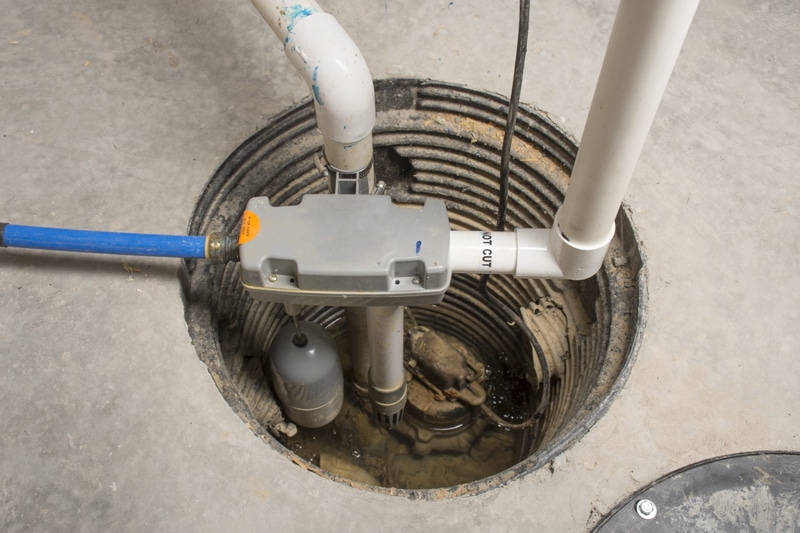
A sump pump is a crucial component in protecting your home from water damage, especially in areas prone to heavy rainfall or flooding. Whether you have a basement, crawl space, or live in a region with a high water table, a sump pump helps prevent costly water-related issues by redirecting excess groundwater away from your home. Ignoring the need for a properly functioning sump pump can lead to structural damage, mold growth, and expensive repairs.
What is a Sump Pump and How Does It Work?
A sump pump is a device installed in the lowest part of a basement or crawl space. It sits inside a sump pit, which collects excess water that seeps into the foundation. When the water reaches a certain level, the sump pump automatically activates, pumping the water away from your home through a discharge pipe.
There are two main types of sump pumps:
- Submersible Sump Pumps – These are installed inside the sump pit and operate underwater, making them quieter and more efficient.
- Pedestal Sump Pumps – These sit above the sump pit with a separate motor, making them easier to maintain but louder in operation.
Both types serve the same purpose—keeping your home dry and free from water damage.
Why Every Home Needs a Sump Pump
1. Prevents Basement Flooding
One of the primary functions of a sump pump is to prevent flooding in basements and crawl spaces. When heavy rainfall occurs or the water table rises, excess water can seep into your home’s foundation, causing severe damage. According to the National Flood Insurance Program, flooding is one of the most common natural disasters. A sump pump acts as a first line of defense, ensuring water is efficiently removed before it becomes a problem.
2. Reduces the Risk of Mold and Mildew Growth
Standing water and excess moisture create an ideal environment for mold and mildew to thrive. Not only does this pose a health risk—leading to respiratory issues and allergies—but mold can also cause structural damage to your home. Check this guide on mold prevention in basements to understand how moisture control can protect your home.
3. Protects Your Home’s Foundation
Excess moisture can weaken your foundation over time, leading to cracks, shifting, and structural instability. When water accumulates around your home’s foundation, it exerts hydrostatic pressure, which can push water into your basement through small cracks. A sump pump helps relieve this pressure by diverting water away, preventing costly foundation repairs.
4. Safeguards Your Belongings
Many homeowners use their basements or crawl spaces for storage. Without a sump pump, flooding can ruin valuable belongings, furniture, and electronics. Even if you don’t store items in your basement, excessive moisture can still create an unpleasant environment and damage walls, floors, and insulation.
5. Increases Property Value
A home with a properly functioning sump pump is more attractive to potential buyers. If you’re planning to sell your home in the future, a sump pump provides peace of mind to buyers who want a home protected from water damage.
Common Issues with Sump Pumps
Like any appliance, sump pumps require maintenance and can experience issues over time. Here are some common problems homeowners face:
- Power Failures – Since sump pumps rely on electricity, a power outage during a storm can render them useless. A battery backup system can help keep your sump pump operational in emergencies.
- Clogged Discharge Pipes – Debris, dirt, and ice can block the discharge pipe, preventing water from being pumped away effectively.
- Pump Burnout – If the pump is overworked due to excessive water infiltration or a malfunctioning float switch, it may overheat and fail.
- Improper Installation – A sump pump must be installed correctly to function properly. Professional installation ensures proper sizing, placement, and drainage setup.
How to Maintain Your Sump Pump
Regular maintenance is key to ensuring your sump pump remains in top working condition. Here’s what you should do:
- Check the Float Switch – Ensure it moves freely and activates the pump when water levels rise.
- Clean the Pump and Pit – Remove debris and dirt from the sump pit to prevent clogging.
- Test the Pump Regularly – Pour a bucket of water into the sump pit to check if the pump activates correctly.
- Inspect the Discharge Pipe – Ensure there are no blockages or leaks.
- Consider a Backup System – A battery-powered backup pump can provide protection during power outages.
Happy Plumbing – Sump Pump Services in San Diego
A properly functioning sump pump is essential for protecting your home from water damage, mold growth, and foundation issues. If you’re experiencing sump pump failures, need a replacement, or want a new installation, Happy Plumbing offers expert sump pump services in San Diego. Our team ensures your system is in optimal condition, providing your home with reliable flood protection.
